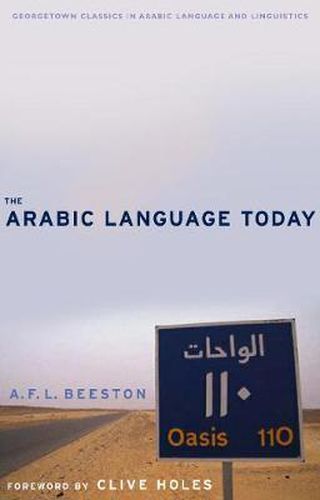Readings Newsletter
Become a Readings Member to make your shopping experience even easier.
Sign in or sign up for free!
You’re not far away from qualifying for FREE standard shipping within Australia
You’ve qualified for FREE standard shipping within Australia
The cart is loading…






In this classic of Arabic linguistics, A. F. L. Beeston explains the principles underlying the phonology, morphology, syntax, script, and grammar of modern written Arabic, which has changed little since Arabic grammarians outlined the language in the eighth century. Originally published in 1970, The Arabic Language Today begins with a useful introduction to the development of the language from the fifth and sixth centuries through the nineteenth century. Beeston goes on to describe the logical structure of the language, to consider the development of the lexicon, and to comment on how the language has diverged from the Classical. For general and comparative linguists who want to know how Arabic works and for people with some working knowledge of the language who want to know more about the theory behind it, Beeston’s work is a fine structural analysis and careful examination of Standard Arabic from a theoretical standpoint. Concise and brief in length, this book presents a wealth of information and is a challenging yet rewarding read for linguists, scholars, and students of Arabic. It includes an appendix of script styles and a bibliography.
$9.00 standard shipping within Australia
FREE standard shipping within Australia for orders over $100.00
Express & International shipping calculated at checkout
In this classic of Arabic linguistics, A. F. L. Beeston explains the principles underlying the phonology, morphology, syntax, script, and grammar of modern written Arabic, which has changed little since Arabic grammarians outlined the language in the eighth century. Originally published in 1970, The Arabic Language Today begins with a useful introduction to the development of the language from the fifth and sixth centuries through the nineteenth century. Beeston goes on to describe the logical structure of the language, to consider the development of the lexicon, and to comment on how the language has diverged from the Classical. For general and comparative linguists who want to know how Arabic works and for people with some working knowledge of the language who want to know more about the theory behind it, Beeston’s work is a fine structural analysis and careful examination of Standard Arabic from a theoretical standpoint. Concise and brief in length, this book presents a wealth of information and is a challenging yet rewarding read for linguists, scholars, and students of Arabic. It includes an appendix of script styles and a bibliography.